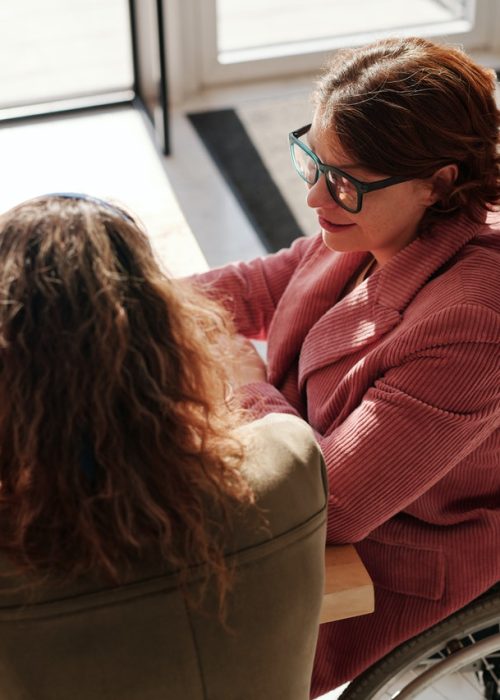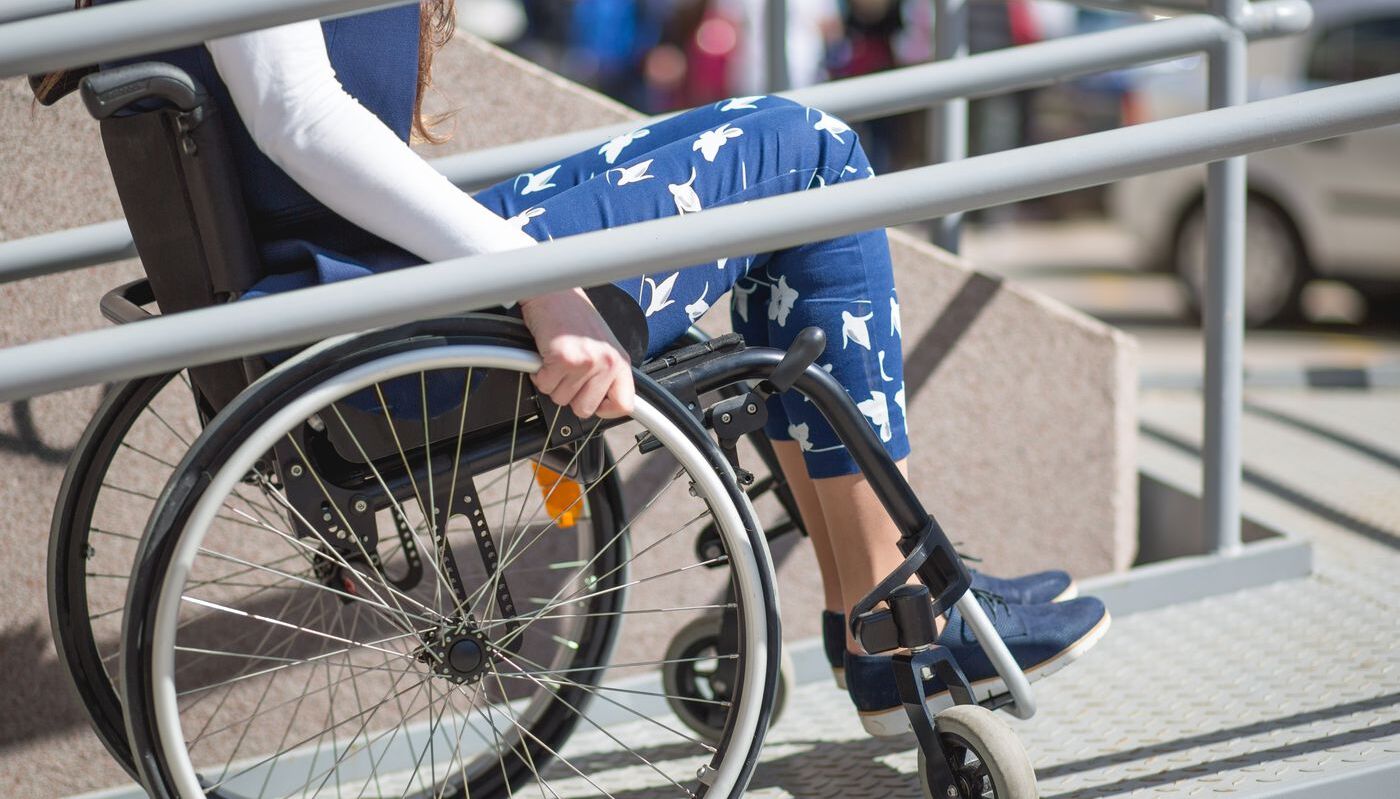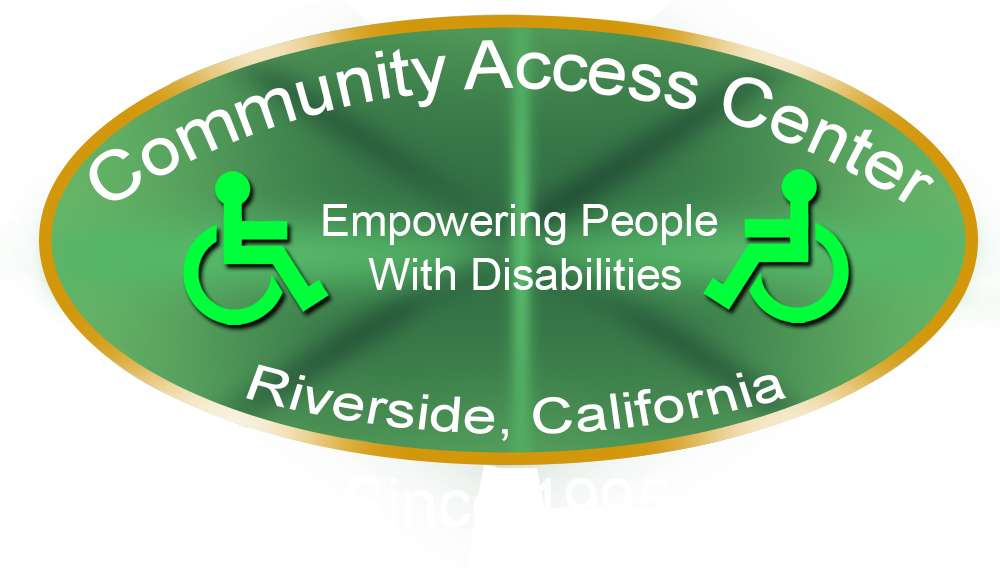Disaster Planning for People with Disabilities

Create Your Emergency Plan in Just 3 Steps
- With your family or household members, discuss how to prepare and respond to the types of emergencies that are most likely to happen where you live, learn, work and play.
- Identify responsibilities for each member of your household and how you will work together as a team.
- Practice as many elements of your plan as possible.
Document Your Plan with Our Free Templates
Include Common Emergency Scenarios When You Plan
Plan for the emergencies that are most likely to happen where you live
- Be familiar with natural disaster risks in your community.
- Consider how you will respond to emergencies that can happen anywhere, such as home fires and floods.
- Consider how you will respond to emergencies that are unique to your region, such as volcanoes, tsunamis or tornadoes.
- Think about emergencies that may require your family to shelter in place (such as a winter storm), vs. emergencies that may require evacuation (such as a hurricane).
- Consult our emergency resource library for tips on preparing for, responding to, and recovering from specific disasters.
Plan what to do in case you are separated during an emergency
- Choose two places to meet up:
- Right outside your home in case of a sudden emergency, such as a fire
- Outside your neighborhood, in case you cannot return home or are asked to evacuate
- Choose an out-of-area emergency contact person. It may be easier to text or call long distance if local phone lines are overloaded or out of service. Everyone should carry emergency contact information in writing and saved on their cell phones. Make sure places where your children spend time also have these contact numbers, like at school or daycare.
- Your plan should account for family members who may live elsewhere during the year, such as members of the military on deployment or students away at college, or those who travel frequently.
- How will you need to adapt your plan if they are at home?
- What will you need to do differently if they are away?
Resources on Emergency Preparedness & Recovery
- ACL Policy on CILs and Emergency Preparedness and Response 7.19.18 (docx)
- FEMA Guide: Prepare for Emergencies Now: Information for People with Disabilities
- Tips on Power Loss for People with Disabilities from Ready.gov
- American Red Cross – Guide to Emergency Planning
- Effective Emergency Preparedness Planning: Addressing the Needs of Employees with Disabilities
- Emergency Planning for CILs: For Your Community (pdf)
- Personal Emergency Notebook Checklist (pdf)
- Emergency Information Form (pdf)
- Ready.Gov
- An ADA Guide for Local Governments: Making Community Emergency Preparedness and Response Programs Accessible to People with Disabilities
- Lifeline: Affordable Telephone Service for Income-Eligible Subscribers
Information Specific to a Particular Disability:
- General Tips for Disabilities and Medical Concerns (pdf)
- Cognitive Disabilities (pdf)
- Communication Disabilities (pdf)
- Hearing Impairments (pdf)
- Life Support Systems (pdf)
- Mobility Concerns (pdf)
- Psychiatric Disabilities (pdf)
- Service Animals (pdf)
- Visual Disabilities (pdf)
- Environmental and Chemical Sensitivities (pdf)
Disaster Preparedness Services
- Plan by location – Emergency Preparedness via State and National Resources
- Plan by Disaster – Emergency Preparedness via Natural Disaster (Hurricane, Flood, etc.)
- Plan by Hazard – Emergency Preparedness via Hazard (Bioterrorism, Chemical Emergency, etc.)
- Emergency Evacuation Transportation – Register for transportation during an emergency evacuation
- Find your Local Red Cross – Find your local chapter
First Responder Resources
- TRAIN (Disaster Preparedness Course) – A course designed for disaster relief workforce to better meet the needs of people with disabilities
- Disaster Recovery Resources – Find a Disaster Recovery Center (DRC) location near you
- Apply for Disaster Assistance – Direct assistance for individuals, families, or businesses, whose property has been damaged or destroyed and whose losses are not covered by insurance.
- National Emergency Family Registry and Locator System – When individuals or families are displaced due to a major disaster
- American Red Cross Safe and Well – Register yourself, or search for family, that have listed themselves as “Safe and Well”
- American Red Cross Disaster Relief and Recovery Information – Picking up the pieces after a disaster
- FEMA Interim Housing – Helping individuals and families find a place to live after a disaster
- Natural Disaster Legal Aid Resource Center – Giving people affected by disaster legal assistance and resources
Job Accommodation Network
National Oceanic and Atmospheric Administration Resources
KU Research & Training Center on Independent Living
Plan to let loved ones know you’re safe
If your community experiences a disaster, be sure to register on the American Red Cross Safe and Well website to let your family and friends know you are safe.
Or, call 1-800-RED CROSS (1-800-733-2767) and select the prompt for “Disaster” to register yourself and your family.
Read more tips for reconnecting with loved ones after a disaster or emergency.
The workshops will be held by an advocate certified by FEMA and Homeland security in disaster planning for people with special needs.
Disaster Preparedness for People With Disabilities has been designed to help people who have physical, visual, auditory, or cognitive disabilities to prepare for natural disasters and their consequences.
Download the FREE Emergency App
Find our Emergency App in the Apple Store » or Google Play »
Aplicación de Emergencias – ahora disponible en español » también!
More Preparedness Resources
Useful links for Disaster Planning:
Individuals with Disabilities and Others with Access and Functional Needs
Disaster Safety & Preparedness Guide for Seniors & People with Disabilities
Guide for Including People with Disabilities in Disaster Preparedness Planning
This guide is primarily intended to assist people involved in preparedness planning
Community Access Center Never Charges A Fee For Services Provided.
We Advocate for you!
Investigation of discrimination claims and mediation on behalf of people with disabilities in order to resolve conflicts that impede the attainment of needed benefits and services.
Consumer Rights Notification
Every consumer of the Community Access Center has the right to appeal any decision which denies you service. (NOTE: The appeal must follow certain guidelines and time limitations; ask your service provider for a copy of the procedure).If you desire representation in addressing your concerns/dissatisfaction with the Community Access Center (CAC), you have the right to contact the Client Assistance Program (CAP) for assistance. Contact the CAP at 1 (800) 776-5746, (and for the hearing impaired their TTY 1 (800) 576-9269), and you will be referred to a Client Assistance Program not connected with CAC. This will prevent any potential conflict of interest.

